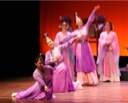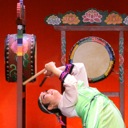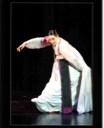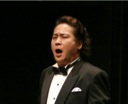We are looking for students
We are looking for students who are willing to learn and interact with teachers with passion for the music and performing.
- 1st grade to 12th grade
- College students
- Adults
- Seniors
We are looking for members
We are looking for members who would perform with us at variety of stages.
Requires: Majored in Korean Dance or Korean Traditional Music, Pan So-ri with some experience in performing arts.
Jazz, Modern Dance, Acting, Vocal, Instrumental music
Junior Member: Finished required classes in KPAAA
Classes are opened!
These are the classes KPAAA offer. If you have any questions about enrollment, please email us to hjcho153@gmail.com or call us at 703-623-8820
-
KOREAN DANCE
Korean dance focuses on the internal expression and metaphysical joy and ecstasy, or mot and heung. The body is usually concealed in voluminous dresses and full sleeves to depict the veneration of flowers and birds with reference to influences from surrounding cultures but modified by sophistication and trend. The turned–up–toed slippers are the embodiment of Korean culture displaying unity, flow and spirit, or hon. -
CREATIVE DANCE
Creative dance is a form of dance that provides the potential for personal expression. There is no right or wrong way of moving and the classes are conducted quite differently from traditional dance classes. One of the goals of creative dance is to communicate through movement and the dancer draws on their own inner resources to create and express through their own unique movement. The aim of creative dance classes is to continually expand and extend movement range by drawing inspiration from a range of external stimuli including music, props, emotions and other dancers. -
PRAISE & DANCE
Class description will be updated soon. -
SAMUL NO-RI
Samul nori has its roots in nong-ak (literally "farmers' music"), a Korean folk genre comprising music, acrobatics, folk dance, and rituals, which was traditionally performed in rice farming villages in order to ensure and to celebrate good harvests. Specifically, samul nori music derives from utdari pungmul (the gut, or shaman ceremony rhythm of the Gyeonggi-do and Chungcheong provinces of South Korea), as well as the genres of Yeongnam folk music and Honam udo gut, combined with more contemporary improvisations, elaborations, and compositions.[3] Such nong-ak is steeped in traditional animism and shamanism, but also shows influences from Korean Buddhism. While nong-ak often features the use of wind instruments, samul nori only features the aforementioned four percussion instruments. -
NANTA
Nanta is the longest-running show in Korean history. In Korea it is performed in three theatres in Seoul as well as in one theatre on the island of Jeju. The musical made its international debut at the 1999 Edinburgh Festival Fringe, where it received an award for best performance.[5] Since then it has been staged in 18 countries around the world. Nanta opened off Broadway in New York City in 2004[6][7][8] and ended its run in August 2005.[9] -
GA YA GEUM
The gayageum or kayagum is a traditional Korean zither-like string instrument, with 12 strings, though some more recent variants have 21 or other numbers of strings. It is probably the best known traditional Korean musical instrument.[1] -
SAM GO MU
The performers of Sam-go Mu are both drummers and dancers, combining rhythmic dexterity with acrobatic movement. The dance begins with a dramatic rolling of drumsticks around the ridges of the drum's circumference, gradually building to a crescendo. The elegant and gentle movements of the female dancers express the blessing and great joy from the earth.
-
MIN YO
Minyo, a group of common people's songs, was transmitted from mouth to mouth and was created either by a group of people or by a single person. Minyo is an art. Rooted in life, it directly expresses the way of common people's life, emotions, and thoughts. Minyo was sung as people worked, performed rituals, or played. Minyo existed largely out of the necessity of life. It was sung in order to aide the work. In singing, the rhythm of labor emerges; and the rhythmic movement eases the labor physically and mentally.
-
PAN SO-RI
Pansori (also spelled p'ansori) is a genre of Korean traditional music. It is a vocal and percussional music performed by one sorikkun (a singer) and one gosu (a drummer playing a barrel drum called buk Korean: 북). The term pansori is derived from pan (meaning "a place where many people gather"), and sori (meaning "sound"). -
PIANO
The piano is a musical instrument played by means of a keyboard. Widely used in classical and jazz music for solo performances, ensemble use, chamber music and accompaniment, the piano is also popular as a tool for composing and rehearsal. Although not portable and often expensive, the piano's versatility and ubiquity have made it one of the world's most familiar musical instruments. -
VOCAL
Singing is a skill that requires highly developed muscle reflexes. Singing does not require much muscle strength but it does require a high degree of muscle coordination. Individuals can develop their voices further through the careful and systematic practice of both songs and vocal exercises. -
JAZZ
Jazz is a music genre that originated at the beginning of the 20th century, arguably earlier, within the African-American communities of the Southern United States. Its roots lie in the adoption by African-Americans of European harmony and form, taking on those European elements and combining them into their existing African-based music. Its African musical basis is evident in its use of blue notes, improvisation, polyrhythms, syncopation and the swung note.[1] From its early development until the present day, jazz has also incorporated elements from popular music especially, in its early days, from American popular music.[2] -
MODERN DANCE
Modern dance is a term usually referring to 20th-century concert dance, although it has also been applied to a category of 20th-century ballroom dances. Modern dance refused classical ballet's stress on feet as the primary catalyst for dance movements. It, instead, put stress on torso employing such elements as contact-release, floor work, fall and recovery, and improvisation.[1] It was usually performed in bare feet, often with non-traditional costuming. -
B-BOY
B-boying or Breaking, also called Breakdancing, is a style of street dance that originated among African-American and Puerto Rican youths in New York City during the early 1970s.[2]:125, 141, 153[3] The dance spread worldwide due to popularity in the media, especially in regions such as South Korea, United Kingdom, Germany, France, Russia, and Japan. While diverse in the amount of variation available in the dance, b-boying consists of four kinds of movement: toprock, downrock, power moves, and freezes. B-boying is typically danced to hip-hop and especially breakbeats, although modern trends allow for much wider varieties of music along certain ranges of tempo and beat patterns. -
MUSICAL
Musical theatre is a form of theatre that combines songs, spoken dialogue, acting, and dance. The story and emotional content of the piece – humor, pathos, love, anger – are communicated through the words, music, movement and technical aspects of the entertainment as an integrated whole. Although musical theatre overlaps with other theatrical forms like opera and dance, it may be distinguished by the equal importance given to the music as compared with the dialogue, movement and other elements of the works. Since the early 20th century, musical theatre stage works have generally been called, simply, musicals. -
ACTING
Acting is the work of an actor or actress, which is a person in theatre, television, film, or any other storytelling medium who tells the story by portraying a character and, usually, speaking or singing the written text or play.





























